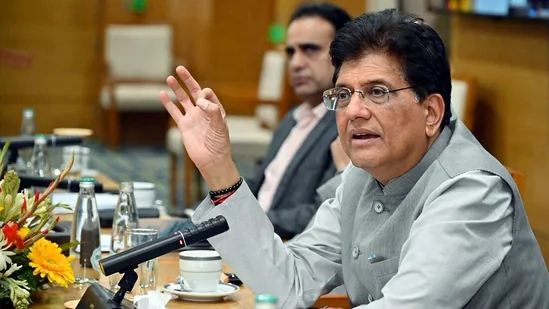India Revives Sawalkote Hydropower Project After Indus Waters Treaty Suspension
- MGMMTeam

- Jul 31
- 4 min read
In a major policy shift with both strategic and developmental implications, India has formally restarted the long-delayed Sawalkote Hydroelectric Project on the Chenab River in Jammu and Kashmir. This decision comes on the heels of India’s suspension of the Indus Waters Treaty (IWT) with Pakistan—a diplomatic agreement that, for over six decades, had restricted India’s use of water from rivers allocated to Pakistan. The tender, issued by the National Hydroelectric Power Corporation (NHPC) on July 29, marks the official relaunch of a project that has been in limbo for nearly 40 years.

Sawalkote: A Dream Deferred, Now Reawakened
Originally proposed in the early 1980s, the Sawalkote hydropower project faced decades of stagnation due to environmental regulations, land acquisition hurdles, military encampments, and the rigid constraints of the Indus Waters Treaty. However, recent developments—including a terror attack in Pahalgam in April 2025—pushed India to pause its treaty obligations, freeing it from the requirement to notify Pakistan in advance about projects on western rivers.
Now cleared by the Forest Advisory Committee and recognized as a "project of national importance," Sawalkote has received the green light to move forward. With an expected installed capacity of 1,856 megawatts, it will become the largest hydroelectric plant on the Chenab River. The project features a 192.5-metre high dam, an underground powerhouse, and several tunnels and auxiliary units to manage both generation and ecological flow.
The Strategic Context: From Restraint to Assertiveness
The revival of Sawalkote is not merely a technical project—it symbolizes a paradigm shift in India’s foreign and internal policy. Since the 1960 signing of the Indus Waters Treaty, India had observed strict limitations on its use of the Chenab, Jhelum, and Indus rivers, despite being the upper riparian state. However, repeated terrorist attacks emanating from Pakistan and the latter's misuse of international platforms to stall India’s hydropower ambitions compelled a re-evaluation.
On April 23, 2025, India officially suspended the treaty, citing national security. This suspension allowed India to halt data sharing on river flow and eliminate prior notification requirements for new infrastructure. It also paved the way for fast-tracking key hydroelectric projects in Jammu and Kashmir—an area long affected by energy shortages and underdevelopment due to bureaucratic and geopolitical constraints.
A Broader Energy and Infrastructure Vision
The Sawalkote project is part of a broader mission to unlock the hydropower potential of Jammu and Kashmir. Alongside Sawalkote, India is pushing forward six other major projects—Pakal Dul, Ratle, Kiru, Bursar, Kirthai I & II, and Parnai—expected to collectively generate over 5,000 megawatts. These projects will not only bolster India's clean energy portfolio but also bring economic revitalization to the sensitive Himalayan region.
In Parliament, Union Home Minister Amit Shah and External Affairs Minister S. Jaishankar emphasized that the treaty had become outdated and disproportionately favorable to Pakistan. Shah noted that the decision to reclaim India's water rights was long overdue, while Jaishankar said the Modi government had corrected "historical wrongs" made by previous administrations, particularly under Jawaharlal Nehru.
Pakistan's Protests and the Global Reaction
As expected, Pakistan reacted strongly to India's actions. Islamabad labeled the suspension of the treaty as a breach of international norms and warned of possible consequences if India were to divert or block water from rivers flowing into Pakistan. The Chenab River, in particular, is vital to Pakistan’s agriculture and energy production.
Yet, India has maintained that the suspension is both legal and necessary under the treaty's own clauses, which allow for exceptions in the event of security concerns. The World Bank, a broker of the original treaty, has so far issued cautious statements but has not taken any concrete steps to mediate, signaling a potential acceptance of India's position in the evolving regional context.
Economic and Environmental Impact
Apart from the strategic narrative, Sawalkote also promises substantial benefits for India’s energy future. As a run-of-the-river project, it minimizes large-scale ecological damage while offering high output. The planned dam will generate reliable electricity for the power-starved northern grid and contribute significantly to India’s renewable energy targets.
Additionally, the infrastructure development in the region is expected to create thousands of jobs, enhance local economies, and improve transportation and connectivity. Environmental safeguards, including an ecological flow system and advanced flood discharge tunnels, are built into the design to ensure long-term sustainability.
Conclusion: A New Era for Indian Hydropower Diplomacy
The revival of the Sawalkote Hydropower Project signals a new era in India’s approach to water, energy, and national sovereignty. After decades of diplomatic restraint under the Indus Waters Treaty, India is now asserting its rights, backed by both legal provisions and geopolitical necessity. This project is not only about harnessing river power—it’s about reclaiming strategic autonomy and setting the stage for a future where India’s internal development is no longer hostage to outdated treaties or cross-border threats.
As India builds dams, tunnels, and turbines across the Himalayan rivers, it is also constructing a more assertive and self-reliant narrative—where development, security, and diplomacy flow together with the rivers it seeks to reclaim.
(Sources: India Today, Moneycontrol, NDTV)




Comments